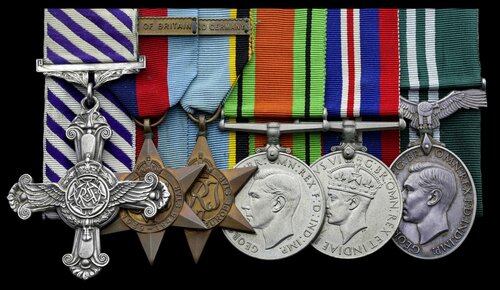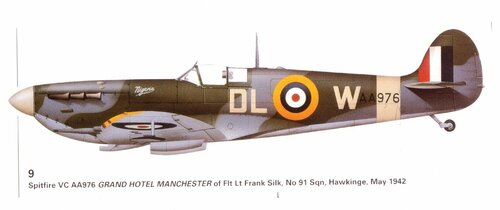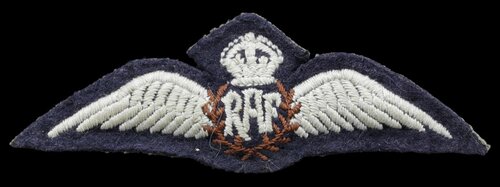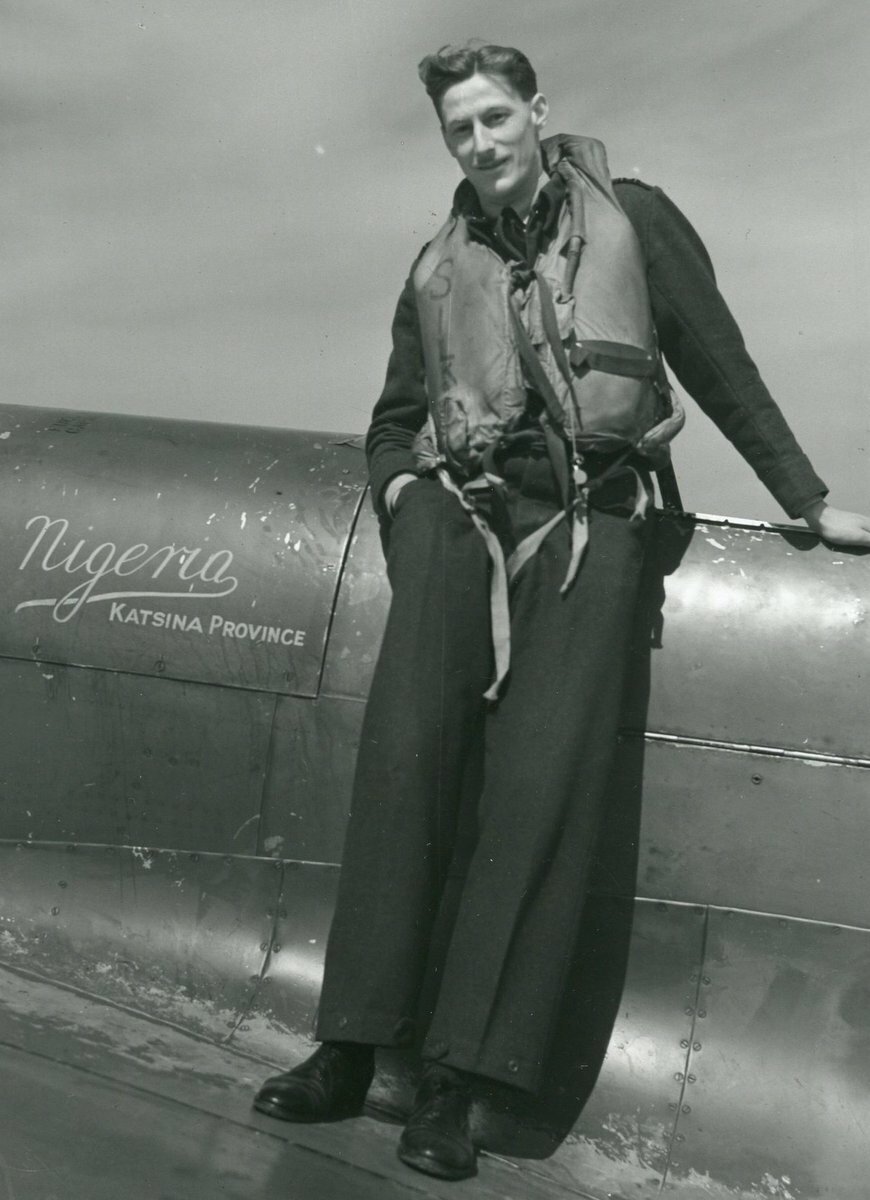Auction: 20003 - Orders, Decorations and Medals
Lot: 300
A Second World War photographic reconnaissance D.F.C. group of six attributed to Flight Lieutenant F. H. 'Frankie' Silk, Royal Air Force Volunteer Reserve, a veteran of the Battle of Britain
As a young Sergeant Pilot in No. 111 Squadron, he saw action in Hurricanes at the height of the Battle but was hospitalised after being wounded in a combat with 109s over north Kent in early September 1940
Following further active service in Spitfires of No. 91 Squadron on cross-Channel sweeps, he became a highly skilled photographic reconnaissance pilot in No. 4 Squadron, carrying out vital work in the lead up to D-Day and afterwards in support of the 1st Canadian Army
As such, his missions often required low-level reconnaissance in the face of curtains of heavy flak and, on one occasion, a close encounter with three Fw. 190s
Silk was also close friends with the legendary Neville Duke and was Best Man at his wedding
Distinguished Flying Cross, G.VI.R., the reverse officially dated '1945' and privately engraved, '111979 F./Lt. F. A. [sic] Silk, R.A.F.'; 1939-45 Star; Air Crew Europe Star, clasp, France and Germany; Defence and War Medals 1939-45; Air Efficiency Award, G.VI.R., 1st issue, unnamed, generally good very fine (6)
D.F.C. London Gazette 10 April 1945. The original recommendation states:
'Since joining this squadron [No. 4 Squadron] in February 1944, Flight Lieutenant Silk has carried out a large number of operational sorties on photographic reconnaissance.
Prior to D-Day this officer produced exceptional results on mosaics, requiring flying ability of a high order, which were of vital importance and influence on the planning of the assault. In addition, the work of the Squadron necessitated many deep penetrations into enemy occupied territory to cover marshalling yards and airfields; on these, which were often carried out in bad weather, F./Lt. Silk displayed great navigational skill and determination in locating the target.
In Normandy and during the subsequent advance this officer maintained a very high standard of photography and this made a magnificent contribution to the success of the 1st Canadian Army for which the Squadron was working.
On one occasion F./Lt. Silk was attacked by three F.W. 190s while engaged on a photographic run. He showed great coolness and courage by leading them away from the area and then, after skilfully outmanoeuvring them, he returned and completed his mission before proceeding top base.
During the final assault to free the port of Antwerp, when photographs had to be obtained regardless of weather conditions, this officer showed great bravery when carrying out several low level photographic missions during which it was necessary to fly straight and level at 3,000 feet in the face of intense opposition from the ground.
F./Lt. Silk, by complete disregard for his personal safety and untiring efforts, has set a very fine example of gallantry and unswerving devotion to duty.'
Frank Harry Silk, who was born on 12 May 1917, enlisted in the Royal Air Force Volunteer Reserve in the summer of 1939 and, having qualified as a pilot and attended an O.T.U., was posted to No. 111 Squadron, a Hurricane unit operating out of Croydon and Debden, in mid-August 1940.
He quickly saw action, taking part in numerous scrambles and sorties in the period leading up to early September; he flew four sorties on 24 August alone. However, on the 5th, he was compelled to make a forced-landing near Lullingstone Castle, after being wounded in a combat with 109s over north Kent. He was admitted to hospital and did not re-join his squadron until late November, by which time it had moved north to Dyce.
Silk returned to the fray with No. 91 (Nigeria) Squadron at Hawkinge in June 1941, being commissioned towards the year's end and appointed a Flight Commander in January 1942.
He consequently flew cross-Channel 'Rhubarbs' in the unit's Spitfires - often the Spitfire 'Katsina Province' - in addition to carrying put Air Sea Rescue flights. On 30 August 1941, he attacked seven M-class minesweepers at Ostend and on 5 May 1942 he obtained strikes on four enemy coasters off Cap Griz Nez. Moreover, he took a share in a damaged Ju. 88 off Goodwin Sands on 17 June 1942, the enemy aircraft's rear gunner being silenced before it headed to France with black smoke pouring from both of its engines.
In July 1942, Silk was rested with an appointment as a test pilot at Hawkers; he would return to the role of test pilot at the war's end, serving alongside the likes of Neville Duke.
Then in early 1944, Silk was joined to No. 4 Squadron, a photo-reconnaissance unit operating out Aston Down, and it was in this capacity, as cited above, that he was awarded the D.F.C.; by the time of being recommended for the award, he had flown 80 operational sorties with the Squadron.
Obtaining a regular commission in the R.A.F. after the war, he was placed on the Retired List as a Flight Lieutenant in February 1958 and died on 25 August 1970; sold with a file of comprehensive research, including O.R.B. entries and correspondence with aircrew known to the recipient.
For this miniature dress medals, please see Lot 499.
Subject to 20% VAT on Buyer’s Premium. For more information please view Terms and Conditions for Buyers.
Sold for
£3,500
Starting price
£520













